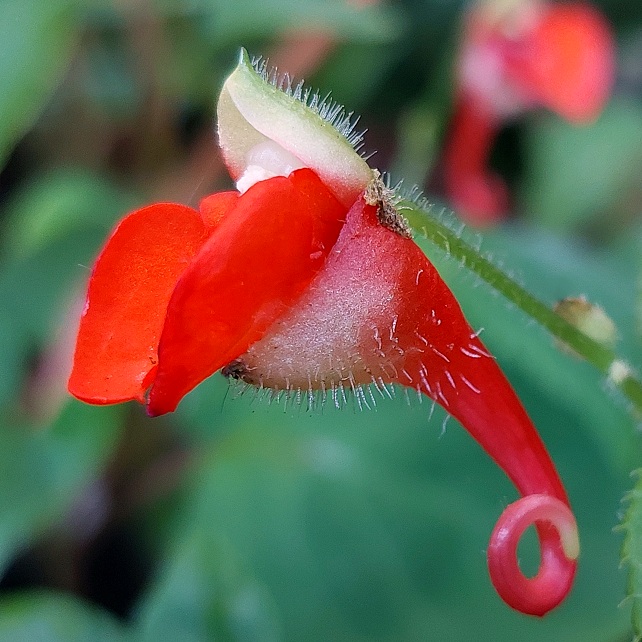Germinating the seeds
When to plant -- Plant your seeds when you receive them for best germination Getting started -- The seeds are small,
so work in a well-lit area. You may plant each seed in individual, small containers,
such as seedling starter trays For soil, use a well draining
mix. A typical mix is 2 parts quality potting soil Fill the pots, without packing down the soil,
and place a seed or 2 on top. Tap the pot lightly to settle the seeds in
the cracks of the soil. If you have
long-fibered sphagnum moss Until the seeds sprout, ensure that the surface soil always stays moist. A plastic dome may be used to maintain moisture, but leave it open slightly to allow some fresh air in. You may need to drip a few drops of water over the seeds each day or two to keep the seeds moist. They sprout well between 66 and 76 degrees F (19-24°C),
and a little cooler at night.
I have no experience germinating them outside that temperature range. I
recommend placing a
minimum/maximum thermometer Place the containers in a bright spot out of direct sun. A bright LED lamp kept 4 inches (10 cm) away provides the right amount of light (See: "Growing indoors with LED lights"). They should begin sprouting in about 3 to 6 weeks, but might take longer. Continue keeping the soil surface moist for 3 weeks after they sprout, and then remove any plastic container over them. Fertilizing -- Once they are 2 weeks old, feed
every 2 weeks with a
small amount of dilute (1/8 strength) liquid fertilizer. Hydroponic fertilizer is ideal for
young seedlings, because it is easily absorbed and contains all essential
nutrients. After 2 months, you may switch to a granular fertilizer Lighting -- It grows well in bright shade, dappled sunlight, or morning sun. Protect it from strong sun exposure. Watering -- Try to keep the soil moist, but not soggy, most of the time.
Avoid letting it dry out completely. If you're unsure if the soil down in
the root zone has the proper moisture, you can use a moisture meter Transplanting -- When your plants are about 2-3 inches tall (5-8 cm), gently transfer them to a larger container. Avoid disturbing the roots when repotting. Eventually you can move them to a hanging planter if you wish. Climate -- It comes from a mild climate, and prefers moderate temperatures with cool nights. It seems to be happiest with days between 55 and 85°F (13-29°C), and nights between 50 and 65°F (10-18°C). Hot temps with warm nights will likely stress it, and i don't think it can survive frost. Over about 40% humidity is best. If it seems to suffer from low humidity indoors, consider using an ultrasonic humidifier. Pruning -- It doesn't require pruning unless you wish to shape your plants. If a stem gets overly long, you can encourage side shoots to form by removing the tip. Pests to watch for -- Watch for other pests that might affect your other plants, like aphids, spider mites, thrips, or mealy bugs. Try using insecticidal soap before using stronger remedies, since some may harm the plant. If you have any questions, feel free to email me. Have fun growing them! - Jeff Strange Wonderful Things
|
|||||||||


